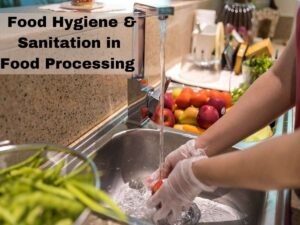Back to: Pre Vocational Studies Primary 5
Welcome to class!
Hello, my fantastic student! I’m so happy to have you back for another practical and important lesson. Today, we’re going to talk about “cleaning cooking tools and equipment.” This is a crucial part of keeping a kitchen safe and hygienic, preventing the spread of germs and foodborne illnesses. It’s like washing your hands before eating or brushing your teeth to keep them healthy. Let’s get started!
Cleaning Cooking Tools and Equipments

After preparing a delicious meal, it’s very important to clean the cooking tools and equipment you used. This removes food particles, grease, and bacteria that can cause problems if left behind.
Here’s a step-by-step guide on how to clean common cooking tools and equipment:
- Gather Your Supplies:
- Dish soap (detergent)
- Warm or hot water
- Sponges or scrub brushes
- Clean dish towels
- Optional: Baking soda, vinegar, bleach
- Cleaning Tools:
- Pots and Pans:
- Remove any leftover food with a spatula or spoon.
- Fill the sink with hot, soapy water.
- Wash the pots and pans with a sponge or scrub brush, paying attention to any burnt-on food.
- Rinse thoroughly with clean water.
- Dry with a clean dish towel or allow to air dry.
- For burnt food, soak the pot or pan in hot, soapy water for some time before scrubbing. You can also use baking soda or a specialized pot cleaner.
- Dishes, Cutlery, and Utensils:
- Scrape off any leftover food.
- Wash in hot, soapy water using a sponge or dishcloth.
- Rinse thoroughly with clean water.
- Dry with a clean dish towel or allow to air dry.
- Knives:
- Wash knives carefully in hot, soapy water, avoiding cutting yourself.
- Never soak knives in the sink, as this can be dangerous.
- Dry immediately with a clean dish towel.
- Cutting Boards:
- Wash cutting boards with hot, soapy water after each use.
- For plastic cutting boards, you can use a mild bleach solution to disinfect them.1
- For wooden cutting boards, you can use vinegar or lemon juice to disinfect and remove odors.2
- Cleaning Equipment:
- Stovetop:
- After the stovetop has cooled down, remove any loose debris.
- Wipe down the surface with a damp cloth and dish soap.
- For stubborn grease, use a degreaser or a paste of baking soda and water.
- Oven:
- Regularly clean the oven to prevent grease and burnt food from building up.
- You can use a commercial oven cleaner or a paste of baking soda and water.
- Follow the instructions on the cleaner carefully.
- Refrigerator:
- Regularly clean the inside of the refrigerator to remove spills and prevent odors.
- Wipe down the shelves and walls with a damp cloth and dish soap.
- You can use a solution of baking soda and water to deodorize the refrigerator.
General Tips:
- Always wash cooking tools and equipment as soon as possible after use to prevent food from drying and becoming difficult to remove.
- Use hot water whenever possible, as it is more effective at removing grease and killing germs.
- Rinse thoroughly to remove all traces of soap.
- Dry tools and equipment completely before storing them to prevent rust and bacterial growth.
- Regularly clean sponges and dishcloths to prevent the spread of germs.
Let’s use an example. After frying eggs in a pan, you would first remove any leftover egg with a spatula. Then, you would wash the pan with hot, soapy water and a sponge, rinse it thoroughly, and dry it with a clean dish towel.
So, to summarize, cleaning cooking tools and equipment properly is essential for maintaining kitchen hygiene and preventing foodborne illnesses. By following these simple steps, you can keep your kitchen clean and safe.
Evaluation
- Can you name three steps involved in cleaning pots and pans?
- Can you explain why it’s important to dry cooking tools and equipment after washing them?
Excellent! You’re doing a fantastic job! I’m so proud of your learning.
We have come to the end of today’s class.
In the next class, we shall be talking about pests and disease of crops.
In case you require further assistance or have any questions, feel free to ask in the comment section below, and trust us to respond as soon as possible. See you in the next class!
